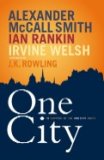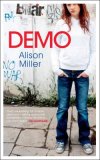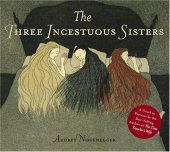Book Reviews
by anna battista
Tim Burton, The Melancholy Death of Oyster Boy & Other Stories (Faber and Faber)

The creative genius behind films such as Batman, Edward Scissorhands, The Nightmare Before Christmas, and the most recent Corpse Bride, returns with a new edition of his poems and rhymes featuring a cast of unique children and creatures. Opening with 'Stick Boy and Match Girl in Love', the collection features, among the others, poems on a robot child, a girl who can't stop staring at things, a boy with nails instead of eyes, and a toxic child who dies when exposed to outdoor air.
Burton's children are desperate outcasts: mummy boy is killed by other kids who think he is a piñata, while oyster boy, with his peculiar bivalve-shaped head, is eaten by his own father who is trying to regain his lost sexual power. Tragedy lurks around the corner for Burton's doomed characters, a feature that inevitably reminds the reader of Edward Gorey's children in the macabre, though hilarious, The Gashlycrumb Tinies.
This parody of children's rhyme books, written and illustrated by Burton, will definitely bring a sinister smile to all his fans' faces, and it will also become a favourite with all those mischievous readers with a very dark sense of humour. For wicked adults only.
Alexander McCall Smith, Ian Rankin and Irvine Welsh, One City (Polygon)

It is that time of the year again, Christmas, when everybody pretends to be good and nice to their fellow human beings, though the farce is usually over even before Boxing Day. One of the things that many of us do to feel good, is giving money to a charity to prove they care for people who are less lucky of them, or to show how they support particular causes. No doubt, then, that quite a few keen readers out there will buy One City, an anthology featuring three short stories by three well-known Edinburgh writers, introduced by Harry Potter author J.K. Rowling. The book will raise funds and awareness for the OneCity Trust, a charity launched in November 2004 as a result of a report commissioned by Edinburgh's Lord Provost to discover the extent of social exclusion in the city and to tackle the problem. Copies of the book will also be left around Edinburgh following the practice of bookcrossing, as part of the 'OneBook OneCity' programme, aimed at encouraging as many Edinburgh residents as possible to read the anthology and think about the issues behind the book.
Though the cause is noble, you feel like questioning the quality of the stories contained in the book: 'Sandy' McCall Smith, as his posh friends and friendly critics call him, follows a biologist who's moved from India to Edinburgh; Ian Rankin takes inspiration from the Edinburgh 2005 Homeless World Cup to tell a tale of magic and illusionism; Irvine Welsh recounts the vicissitudes of a drug dealer and owner of a killer tiger. While Rankin's story is rather engaging and Welsh's has got quite a few tragicomic moments, McCall Smith seems to lose the whole point, trying to focus his attention on an immigrant and therefore on somebody who feels socially excluded, yet ending up in portraying the life of a foreigner who, though homesick, finds himself in a privileged position, since he has got a good job and can afford a house and is, in a way, "socially included". Suppose that's what happens when you live in your ivory tower and in a posh Edinburgh area like McCall Smith does.
The concept of the book is partly rescued by J.K. Rowling's introduction, who reminds the readers that, before becoming famous, she went through some hard times, living the life of a penniless single parent in a rough area of the city. A book with a noble cause behind, but you can't help feeling the writers who collaborated to it were bullied into the project.
Alison Miller, Demo (Hamish Hamilton)

The 2001 Genoa G8 was responsible for many things that happened in Italy. Among them it spawned a new genre, the so-called "anti-globalisation literature". This was a healthy genre till it included essays and pamphlets revealing the dirty truths behind the G8. Then, everybody jumped on the Carlo Giuliani bandwagon writing poems, songs and stories about demos and the power of people. Though some of them had a genuine interest in such themes, the majority fell into the "anti-globalisation navel gazing" category and had no literary value whatsoever. This said, you could argue that Demo by Alison Miller, hailed as a new talent of Scottish literature, is not an Italian book, hence it shouldn't fall into this category. Yet, it starts with an Italian experience – the 2002 Florence European Social Forum – and it features, before page 100, a guy collecting money for the Carlo Giuliani fund. The novel opens with Clare, a Glasgow teenager, heading to Florence to take part to the ESF anti-war demo. The author follows Clare, her brother Danny, and their posh friends Julian and Laetitia over the next few years, taking part in other demos and basically growing up.
There are very few engaging parts in this novel, the major faults are the many two-dimensional and uninteresting characters; their fascination for dreads, seen as a revolutionary thing (and a rite of passage, as cutting them equals to growing up); the lack of credibility of the author's supposedly working-class characters; the fact that Miller seems to be telling stories that she overheard from somebody else who went to various demos; and, last but not least, a few careless spelling mistakes in Italian names, dialogues or sentences. One misspelling and a misquote that will have you cringing can be spotted among the lyrics of Italian working-class hymn "Bandiera Rossa", of which the author decides not to quote the more famous communist version, perhaps feeling the indirect influence of Italian Prime Minister Silvio Berlusconi and of his fear of all things red.
If you feel like being revolutionary read Noam Chomsky instead, then go out, take part in a real demo and organise a real revolution.
Audrey Niffenegger, The Three Incestuous Sisters: An Illustrated Novel (Jonathan Cape)

Author of bestseller The Time Traveler's Wife, Niffenegger is also a professor of art and printmaking at Chicago's Columbia College and, as this volume proves, an interesting artist.
The Three Incestuous Sisters, Niffenegger reveals in her afterword, was started before her bestseller, but she ended up in abandoning the project to complete The Time Traveler's Wife. In the end, it took her fourteen years to complete this volume, considered by the author herself as the book of her heart.
The Three Incestuous Sisters narrates the story - inspired by a dream Niffenegger had - of three sisters living together in a lonely house by the sea, near a lighthouse. Bettine is blonde and pretty, Clothilde has got red hair and quite a lot of talent, Ophile has blue hair and is smart. Chaos arrives in their lives when Bettine falls in love with Paris, the late lighthouse keeper's son, and gets pregnant, unleashing Ophile's jealousy, while Clothilde develops the power to communicate with her unborn nephew. Tragedy lurks around the corner for the two lovers, while jealousy drives Ophile crazy and Clothilde is left to pick up the pieces of their lives.
This scary tale in which love, death, and the paranormal intertwine, is illustrated by Niffenegger's full-page aquatints that manage to tell the story better than the minimalist prose accompanying them does. The style of the prints is a crossover between Aubrey Beardsley, Edward Gorey, Edvard Munch, Charlotte Salomon, and the settings for silent gothic films such as "Nosferatu" or "The Cabinet of Dr. Caligari". A haunting and moving fairy-tale.
Copyright (c) 2005 erasing clouds |
|